Arts & Entertainment
John Waters is bringing back the drive-in — with masks — at Md. Film Festival
Will cicadas spoil the show or add to the fun?
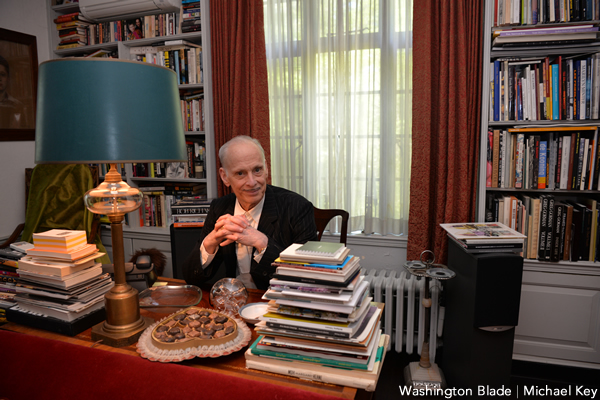
Writer and filmmaker John Waters says he grew up going to drive-in movies.
“We went every single night. With the same movie playing.“
He had a certain routine.
“I used to…drive in alone with two cases of beer covered in a blanket and with four people in the trunk.”
Now Waters is working to introduce a new generation to drive-in movie theaters, which are making a comeback because of the COVID-19 pandemic.
“When the pandemic happened, it did bring drive-ins back,” he said in a recent interview. “Most young people have never been to a drive-in. I think it’s a good answer [to the pandemic], and it’s a good atmosphere for certain types of movies.”
Waters is getting ready to host a double feature drive-in movie night on May 21, as part of the Maryland Film Festival that runs from May 19 to May 27. The theme is “Russian Shock Night at the Drive-In,” because he selected two Russian films to present: Why Don’t You Just Die! and The Road Movie.
This will be the third time during the pandemic that Waters has hosted a drive-in night for a film festival, after double features last year for the Provincetown International Film Festival, at the Wellfleet Drive-In Theatre on Cape Cod, and the New York Film Festival, at The Bronx Zoo.
This time the venue is Druid Hill Park, home of the Maryland Zoo in Baltimore. The film festival is creating a pop-up drive-in theater on the sloping lawn of the Mansion House, the zoo’s headquarters, in conjunction with Baltimore’s Department of Recreation and Parks. It will have a 52-foot-wide inflatable screen and space for 93 vehicles. The price of admission is $25 per car, and tickets sold out in a day.
The film festival is the first organization to get a permit for an in-person outdoor gathering on public property in more than a year from the city of Baltimore, where Mayor Brandon Scott has been cautious about allowing public events. The mayor wouldn’t allow the annual July 4th fireworks show at the city’s Inner Harbor or the annual Artscape festival in July.
“I’m proud to the first one,” said Waters, who came up with the idea for a drive-in during the festival. “I’m thankful that they’re letting us do it.”
Based on his experience at the other festivals, Waters said, he’s confident it will be successful. “I love the idea of the drive-in. I think it will be good, and it is safe. Everybody’s in their car. Even if you haven’t been vaccinated. Well, I hope you don’t come if you haven’t been vaccinated. But still, everybody’s in their car. It’s at a social distance.”
Waters, who lives in Baltimore, traditionally introduces a movie of his choice on Friday night of the annual film festival, and it’s a highlight of the event. Last year it didn’t happen because the festival was cancelled due to the pandemic.
This year the festival is back as mostly a virtual event, because the theater where it’s held is still subject to COVID-related seating restrictions. Organizers asked Waters to bring back his signature movie night. He didn’t want it to be online.
“I said, I hate virtual. I’m so sick of virtual,” he recalled. “They knew I had done a drive-in at the New York Film Festival, where we showed Salo and the Gasper Noe movie, Climax…It works well in the drive In.”
Film festival organizers, led by executive director Sandra Gibson, collaborated with city officials to identify the site and figure out the details. “You don’t have to be vaccinated, but you will have to wear masks…if you’re outside your car,” Gibson said.
The parks department didn’t place a limit on the size of vehicles or the number of people in a vehicle, although larger ones will be located towards the back of the lot, she said.
“If you have a hatchback, we’ll let you open your hatchback and sit in the hatchback,” she said. “We’ll let you sit in the back of a flatbed truck as long as you have a mask on. If you have an SUV that holds eight people, we’re fine with that as long as everybody can see. But they have said you have to stay in your car.”
Waters describes Why Don’t You Just Die! as “a grindhouse, seat-ripping blood-drenched family revenge comedy that begs to be seen in a drive-in with a crazy audience cheering from their cars,” and The Road Movie as “a dash cam documentary from hell that puts you live in the car accidents and near misses all for your rage viewing pleasure.”
He said the two movies are in line with the ones he usually picks for screenings in the film festival’s Parkway Theatre, “but these two I think are even better for a drive-in setting.”
The Road Movie, featuring footage compiled from Russian dashboard cameras, has a car-oriented theme that fits with the drive-in set-up and will be the second film of the night. “You’ll drive home safely after this one, I guarantee you,” Waters said.
He chose a Russian theme, he said, “just because I loved these movies and I knew that Russia was especially kind of unmentionable these days. I’m not a fan of Russia either, but maybe everybody could come dressed as Nikita Khrushchev and his wife, or Putin.”
Given the climate in Russia, “it’s just kind of amazing that these two movies ever got made there,” he said. “They’re pretty radical movies. Especially Why Don’t You Just Die!”
Waters said the location brings back fond memories, in part because the zoo is there and he lived nearby: “I’ve always liked Druid Hill…I used to live across the street at Temple Gardens Apartments for many years.”
He jokes that he’s a little suspicious that the city permitted his event but not the Fourth of July fireworks, citing COVID-19 as the reason.
“Maybe they hope we all get it,” he said. “That’s a new one. We had the censor board. Maybe this is a different way to censor.”
He said he hopes the 17-year cicadas, insects that are just coming out of the ground in Maryland after a 17-year hiatus, make an appearance when his movies are showing.
“I wouldn’t even be mad,” he said, if they “were smashing into the windshields while we were watching. But then we should have shown The Swarm.”
Given the park setting, “you can bet there might be some,” he went on, imagining the possibilities of an insect invasion on his movie night. “It would only add to the disaster theme and the insaneness of the event, to be attacked by nature at Druid Hill Park and watching crazy Russian movies.”
According to the website DriveInMovie.com, there are about 325 drive-in movie theaters currently operating around the United States, down from a peak of more than 4,000 in the 1950s.
Besides the ones in operation, “there are many more that are permanently closed but still remain standing and could potentially be reopened at some point in the future,” says the website, which lists the drive-ins in every state and those that have closed in the past 20 years. “In fact, there have been several drive-in theaters that have been reopened the past couple of years after sitting dark for 20 or even 30 years.”
The first “true” drive-in, the website states, was the “Automobile Movie Theatre” in Camden, New Jersey. It was opened on June 6, 1933 by Richard Hollingshead, a movie buff who initially experimented with showing movies in the driveway of his home.
Hollingshead got a U. S. patent for his drive-in, which the drive-in website describes as essentially a movie screen tied to some trees, a radio placed behind the screen for sound, a film projector on the hood of a car, and a strategy for spacing out cars. His slogan was “The whole family is welcome, regardless of how noisy the children are.”
But Hollingshead’s patent was later declared invalid, and that allowed others to follow his formula without paying him royalties. “Maybe one of the reasons Drive-In Movies are so much more popular in the United States than in other countries is because the drive-in movie is truly an American invention,” the website states.
Today, both vintage drive-ins and pop-up drive-ins are being put to a variety of uses, from sites for fundraisers to filming locations to settings for socially-distanced music performances. When traditional movie theaters were shuttered because of the pandemic, drive-ins became an alternative because the audience remains outdoors.
In some cases, the land is used for swap meets and flea markets when movies aren’t being shown. Joe Biden held drive-in rallies when he was running for President, and voters applauded by honking horns and flashing headlights.
Waters, who just turned 75 and has filmed all of his movies in and around Baltimore, is a drive-in aficionado.
“I’ve spent my whole life in the drive-in,” he said. “I’ve written about them. I grew up in the Timonium Drive-In…The Bengies Drive-In, we filmed Cecil B. Demented in for a week. I spent a week on the roof of that concessions stand.”
In Polyester, “I had an art drive-in,” he said. “The joke was that they showed art movies, and in the concessions stand they had caviar and champagne. That was filmed at the Edmondson Drive-in” in Baltimore.
For him and others in his generation Waters said, the drive-in was “the first apartment’ where “kids could actually get away from their parents.”
It also taught him about saving money by sneaking people in — something he doesn’t want to see on his night.
“I’ll be catching you if you try to sneak in in the trunk, let me warn you,” he said. “I know all the tricks sneaking in the drive-in.”
For this week’s event, the plan is that Waters will be there and will be visible on screen, introducing the movies. Though he’s been vaccinated, there won’t be a Meet-and-Greet session with fans, for safety reasons. “He knows that we’ve got restrictions and he may have his own,” Gibson said. “He’s really conscious that it’s still a pandemic.”
The city has come up with a list of rules and regulations for those with tickets. Besides the requirement that people wear masks when outside the vehicle, no food or drink may be consumed outside of vehicles. Car windows must be up when eating. Tailgating isn’t allowed. Everyone must pre-register and sign a parks department waiver before arriving.
Waters said he read all the rules and couldn’t find any restrictions against having sex in a vehicle during a movie.
“I guess that means you can have sex,” he said. “When I was young, that’s what everybody did.”
The same goes for drinking in a vehicle, he said. “That’s something you always did at the drive-in too.”
The list of rules and regulations is part of the traditional drive-in experience, because every drive-in has rules. In a way, Waters said, it also goes along with the theme for the night:
“It will feel like the Russian government is watching.”
Although the drive-in night is sold out, other tickets are still available to the Maryland Film Festival, including Pride Night and eight LGBTQ-oriented films viewable online. Information about the lineup is at mdfilmfest.com.
Theater
Ford’s ‘First Look’ festival showcases three new productions
A chance to enjoy historical dramas for free before they’re completed
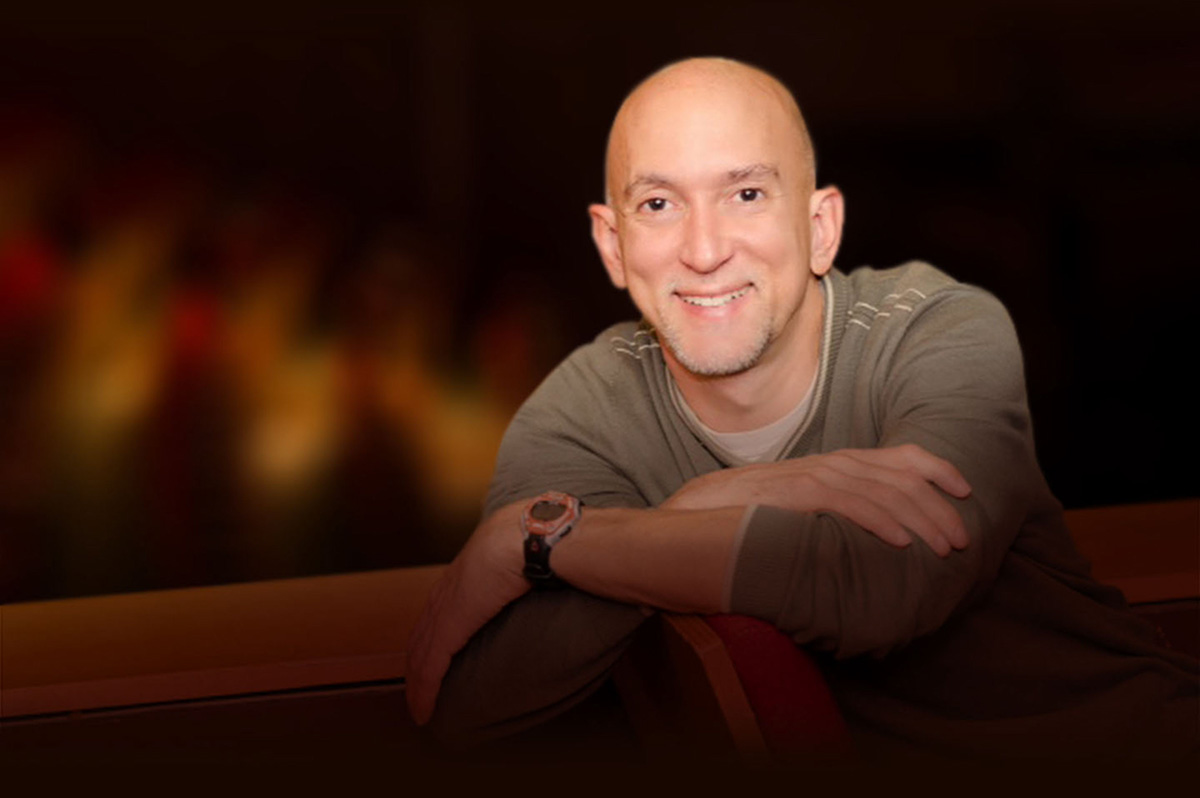
The Ford’s Theatre Legacy Commissions: A First Look – 2026
Jan. 16 & 17
Ford’s Theatre
511 Tenth St., N.W.
FREE
Fords.org
When Ford’s Theatre debuted its new plays festival, “A First Look,” in 2023, it was unclear whether people would come for the staged readings.
“Before the pandemic if you announced the reading of a play, 12 people might show up,” says José Carrasquillo, director of artistic programming at Ford’s Theatre. “Since then, we’ve experienced comparatively massive turnout. Maybe because it’s cheap, or because of the very newness of the works.”
This year’s fourth edition showcases readings of three pieces currently in varied stages of development. The free, two-day festival offers audiences a chance to encounter historical dramas long before they’re completed and fully produced. None are finished, nor have they been read publicly. And befitting the venue’s provenance, the works are steeped in history.
The festival kicks off with “Springs” by playwright Jeanne Sakata and directed by Jessica Kubzansky. Commissioned by The Ford’s Theatre Legacy Commissions, it’s the both epic and personal story of Sakata’s Japanese American family including her grandfather’s experience in an internment camp.
“Sakata’s immigrant grandfather was an exceptionally skilled farmer who helped to stave off starvation in the camp. Still, he never gave up on the idea that he belonged in America. It’s very much a story of today,” says Carrasquillo.
Unlike “Springs,” the festival’s two other works weren’t commissioned by Ford’s. But they both fit the history brief and likely will benefit from the exposure and workshopping.
“Providence Spring,” by California based playwright Richard Helesen and directed by Holly Twyford, portrays Clara Barton (played by local favorite Erin Weaver) as a hero beyond the Red Cross whose then-radical initiatives included cataloguing the Civil War dead, many pulled from mass graves.
Directed by Reginald L. Douglas, “Young John Lewis: Prodigy of Protest” explores a slice from the life of the legendary civil rights activist and longtime congressman. With book and lyrics by Psalmayene 24 and music by Kokayi this collaboratively staged reading between Ford’s and Mosaic Theater is slated to premiere fully produced at Mosaic as a 90-minute musical in the spring of 2026.
“When I was hired at Ford’s in 2018, we began discussing hiring writers who do historical drama,” says Carrasquillo. “Our intention was resolute, but we didn’t do it right away. It took getting through the pandemic to revisit the idea.”
At the same time, the racial reckoning spurred Ford’s to hire playwrights of color to tell stories that had previously been forgotten or ignored.
For Carrasquillo, who is gay, the impulse to commission was crystalized when he saw the film “Hidden Figures,” a true story about “three brilliant African-American women — at NASA during the Space Race, overcoming racial and gender discrimination to make crucial contributions to America’s spaceflight success.” He says, “the film floored me. How many stories like this are there that we don’t know about?”
One of the festival’s happiest experiences, he adds, was the commission of playwright Chess Jakobs’s “The American Five” and its subsequent success. It’s the story of Martin Luther King Jr. and his inner circle, including Bayard Rustin (MLK’s brilliant, unsung gay adviser) leading up to the 1963 March on Washington. The play later premiered fully produced in Ford’s 2025 season.
Increasingly, the readings at Ford’s have become popular with both artists and audiences.
At Ford’s, Carrasquillo wears many hats. In addition to selecting plays and organizing workshops, he serves as an in-house dramaturg for some of the nascent works. But he’s not alone. Also helming the festival are senior artistic advisor Sheldon Epps, and The Ford’s Theatre Legacy Commissions advisor Sydné Mahone.
Because the plays are in development, comments from directors, dramaturgs, and the audience are considered and may become part of the playwrights’ rewrites and changes. If and when the play resurfaces fully produced, audience members might find their suggestion in the completed work.
Is this year’s festival queer influenced? Yes, both by those involved and the topics explored.
Carrasquillo explains, “While Sakata’s “Springs” is primarily about immigration, its message is relevant to the queer community. Civil rights are being taken away from us. We need this playwright’s story to know what has happened and what can happen to any of us.
“Many of Ford’s legacy commissions underscore the importance of civil rights in our country and that’s important to all of us. Queer and not queer.”
Bars & Parties
Mid-Atlantic Leather kicks off this week
Parties, contests, vendor expo and more planned for annual gathering
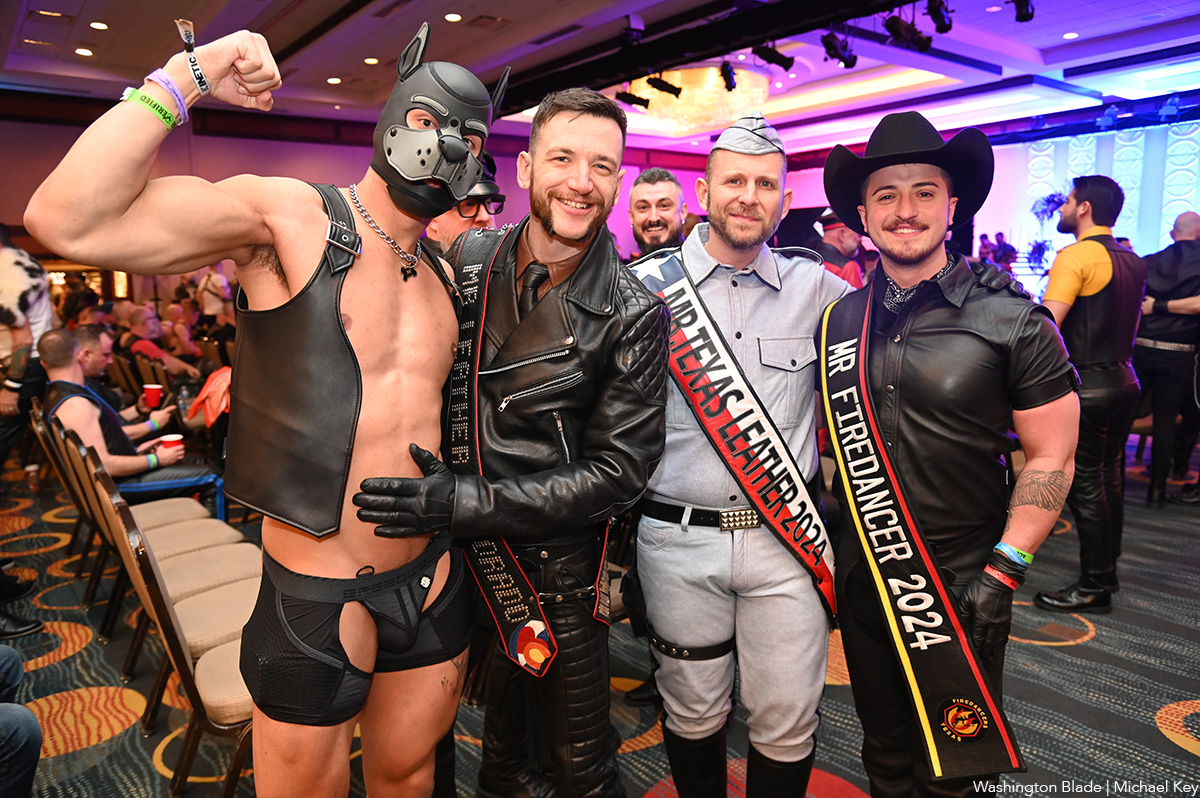
The Mid-Atlantic Leather Weekend will begin on Thursday, Jan 15.
This is an annual three-day event in Washington, D.C., for the leather, kink, and LGBTQ+ communities, featuring parties, vendors, and contests.
There will be an opening night event hosted the evening of Thursday, Jan. 15. Full package and three-day pass pickup will take place at 5:30 p.m. at Hyatt Capitol B. There will also be “Kinetic Dance Party” at 10 p.m. at District Eagle.
For more details, visit MAL’s website.
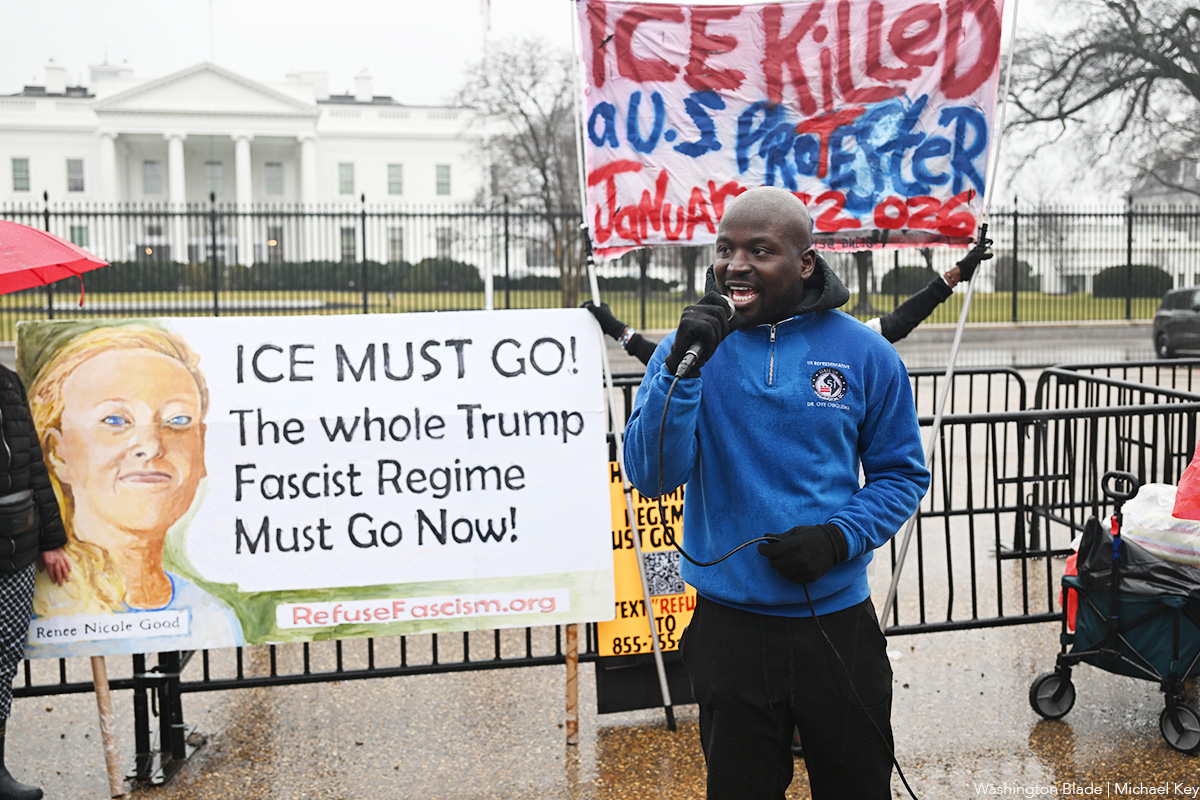
A protest was held outside of the White House on Saturday following the killing of Renee Nicole Good by a U.S. Immigration and Customs Enforcement agent in Minneapolis. Across the Potomac, picketers held signs calling for “Justice for Renee” in Tysons, Va.
“ICE Out For Good” demonstrations were held in cities and towns across the country, according to multiple reports. A march was held yesterday in Washington, D.C., as the Blade reported. Further demonstrations are planned for tomorrow.
(Washington Blade photos by Michael Key)
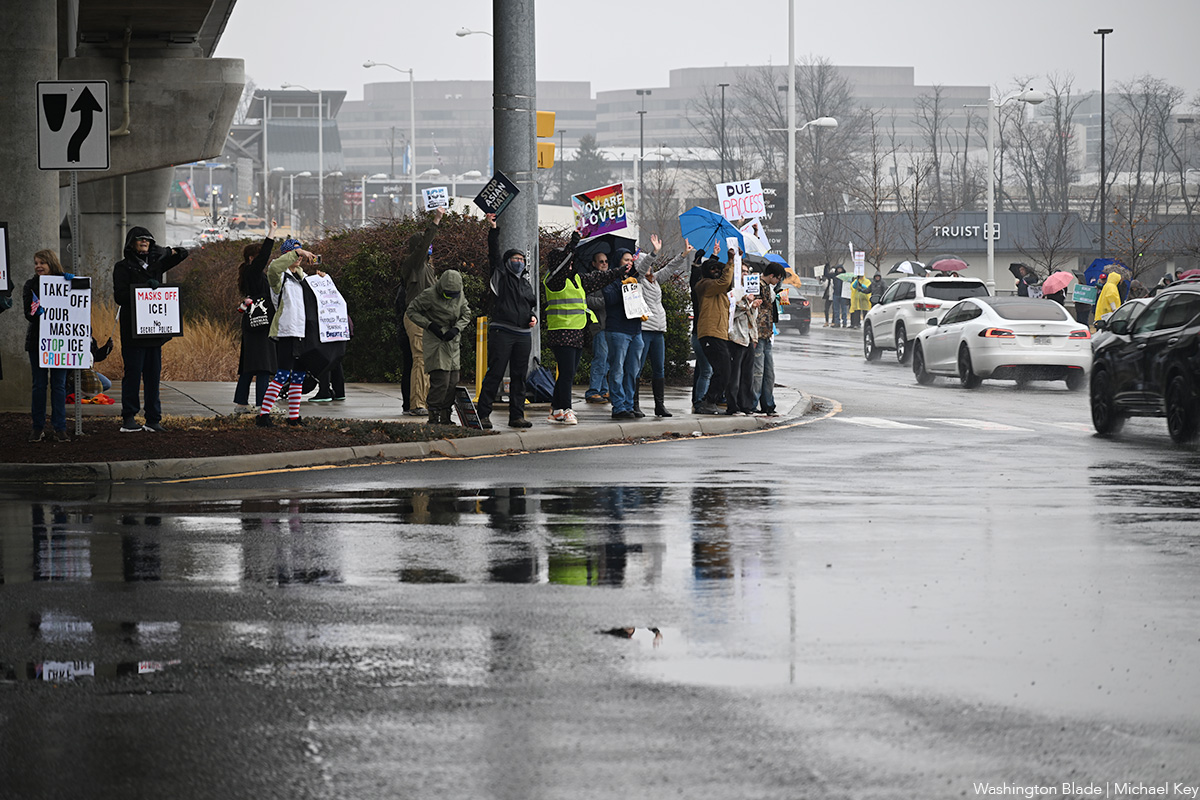
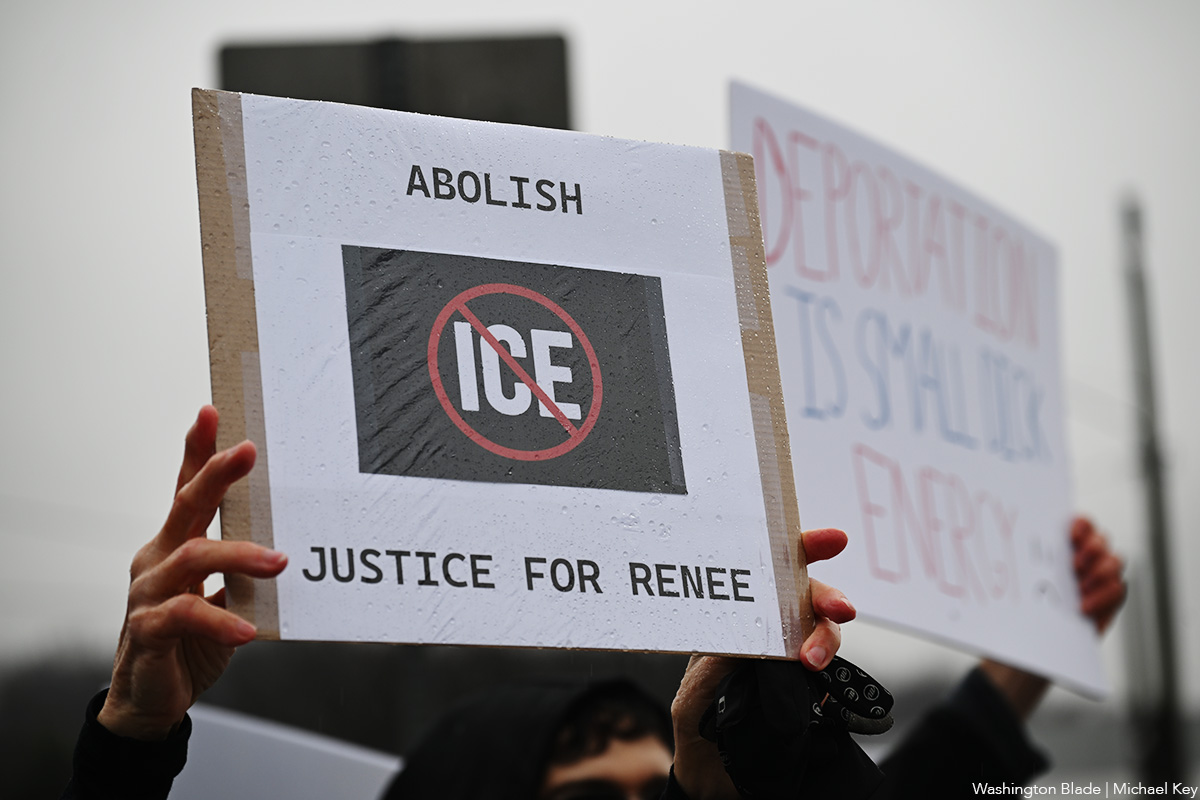
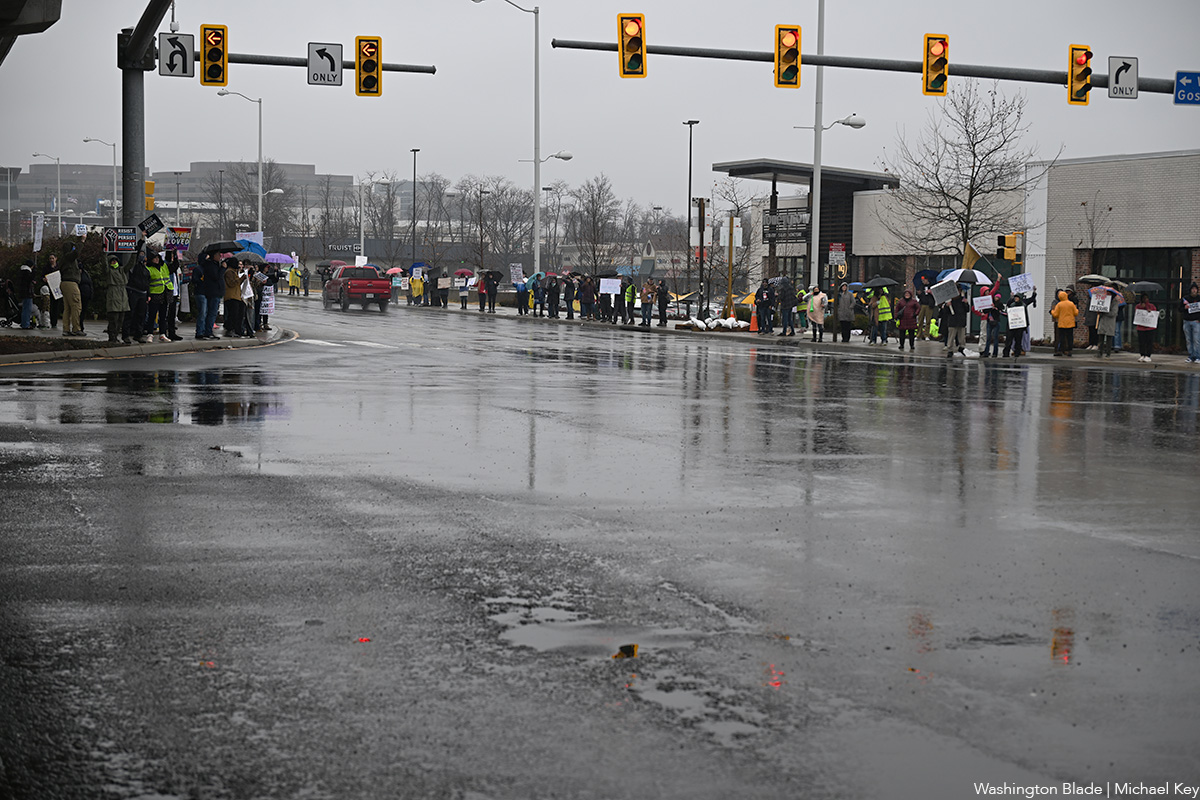


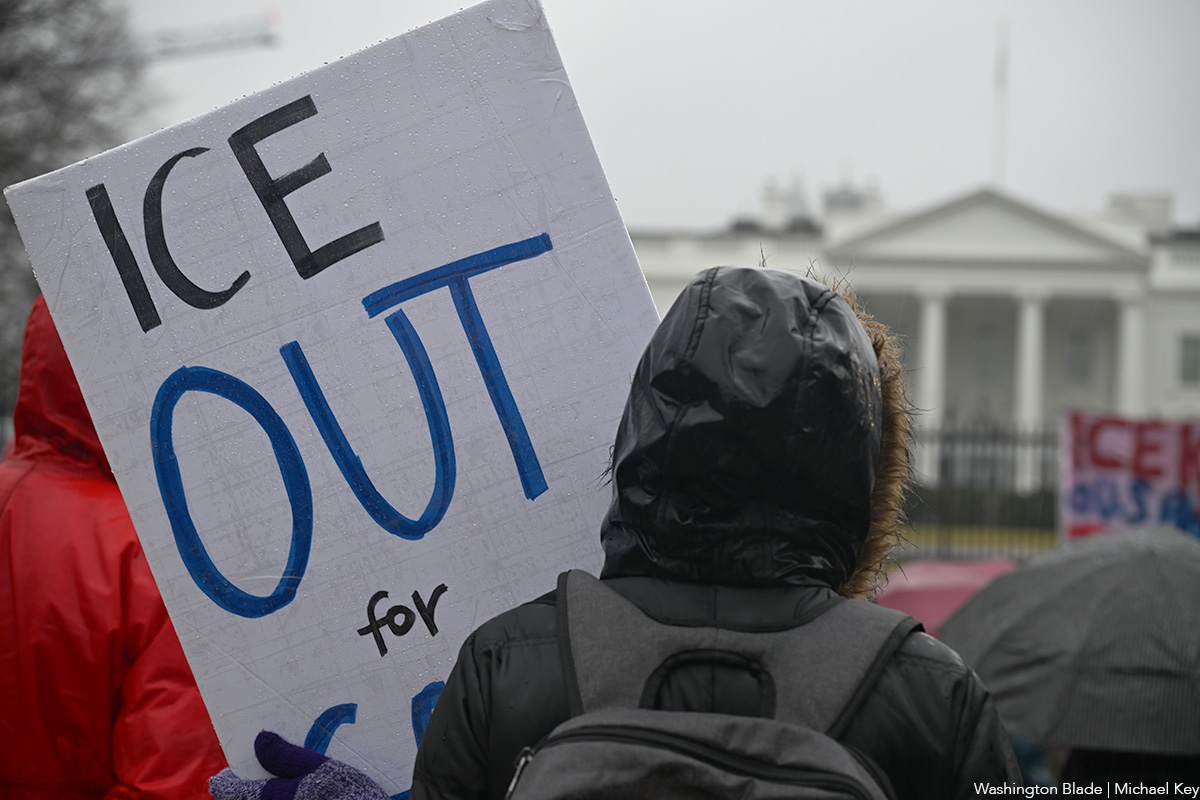



View on Threads
-

 Colombia5 days ago
Colombia5 days agoGay Venezuelan man who fled to Colombia uncertain about homeland’s future
-

 District of Columbia5 days ago
District of Columbia5 days agoKennedy Center renaming triggers backlash
-

 Arts & Entertainment5 days ago
Arts & Entertainment5 days ago2026 Most Eligible LGBTQ Singles nominations
-

 District of Columbia5 days ago
District of Columbia5 days agoNew interim D.C. police chief played lead role in security for WorldPride




















